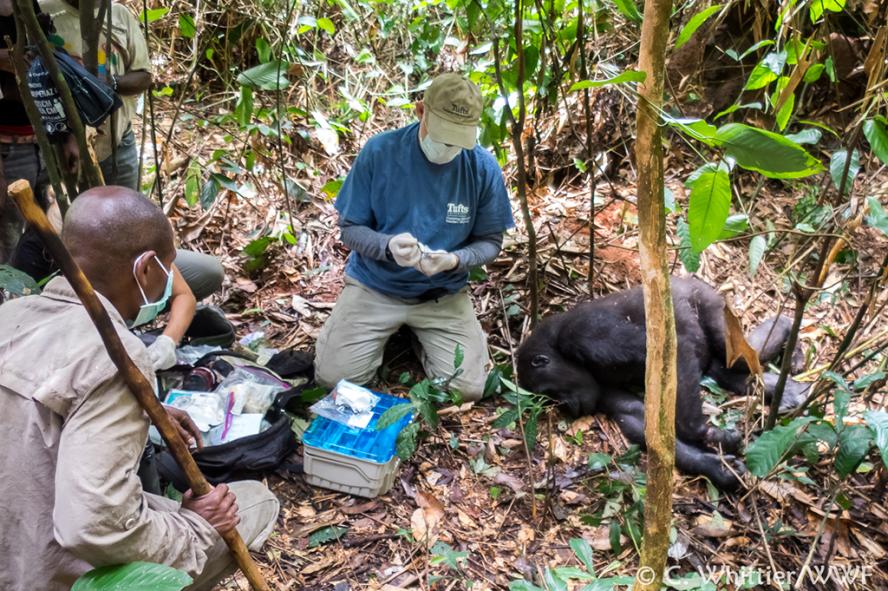-
About
- Leadership & Faculty
- News & Events
-
Academics
- Graduate
- Advanced Clinical Training
- Continuing Education
- Academic Offices
-
Student Life
-
Research
-
Hospitals & Clinics
- Emergency Care
- Hospital Services
-
Community Outreach
- Volunteer
Are Threatened Wildlife Species Safe from COVID-19?
Research assistant professor Chris Whittier says the pandemic raises many questions around the relationships among human, animal, and environmental health.

Like most of us, the faculty and researchers at Cummings School have watched the COVID-19 pandemic develop and spread with a mixture of concern and curiosity.
While none of them were surprised to see a new virus spill over from animals to people, they still have lots of questions about how it’s infecting and affecting people worldwide—and what it will take to bring the U.S. and international outbreak under control.
We asked these experts to share what questions about COVID-19 they’d most like to be able to answer in the months ahead.
Research assistant professor Chris Whittier, V97, is the director of Tufts’ Master of Science in Conservation Medicine program. The program trains students to understand threats and solve problems related to wildlife and ecosystem health, including the disturbances that lead to emerging infectious and zoonotic diseases such as COVID-19. He is also a wildlife veterinarian and epidemiologist who has worked extensively with great apes in Africa.
“From a public health standpoint, I’d most like to know if and to what degree and duration immunity is conferred to the people that recover from COVID-19,” said Whittier. “This will be an important factor in determining the ongoing spread and the potential for a second wave (or more) of infection until there are vaccines available.
From a wildlife health standpoint, it would be reassuring to know that our non-human primate relatives are less likely to succumb to this disease, either because they’re less susceptible to being infected in the first place, or less likely to have any of the common human co-morbidities, including those that generally going along with aging. I could also sleep easier knowing that some of the infectious disease modeling I did with gorilla populations as part of my Ph.D. holds true in that (generally) families of gorillas are usually separated enough to prevent full-blown epidemics from passing through the population without humans accelerating transmission between groups.
It would ultimately be nice to know exactly where this virus came from and how it spilled over or came about from whatever source or sources. We know these spillover events typically happen because of how humans treat wildlife and the environment, but it makes a difference, for example, whether this virus came directly from bats or came about from caging Chinese bats close to foreign pangolins. Better understanding exactly how we—as humans—disturbed and created the situation is the only way of learning specific lessons to try to prevent future events, even if the bottom line is that we need to treat wildlife much better.”
Read more responses in our “Answers Needed About COVID-19” series from Janetrix Hellen Amuguni, Amanda Martinot, Felicia Nutter, Marieke Rosenbaum, Jonathan Runstadler, Abhineet Sheoran, Charles Shoemaker, Sam Telford, and Saul Tzipori.
Department:
Center for Conservation Medicine